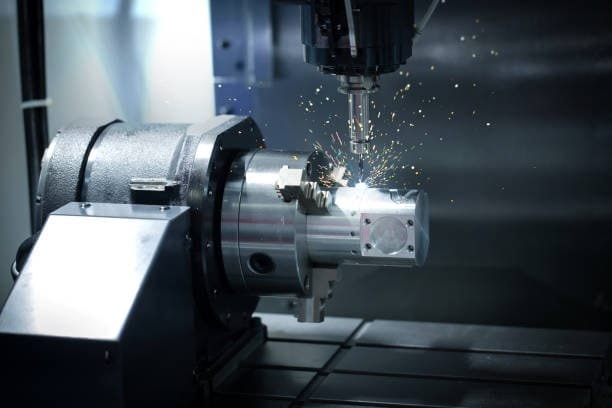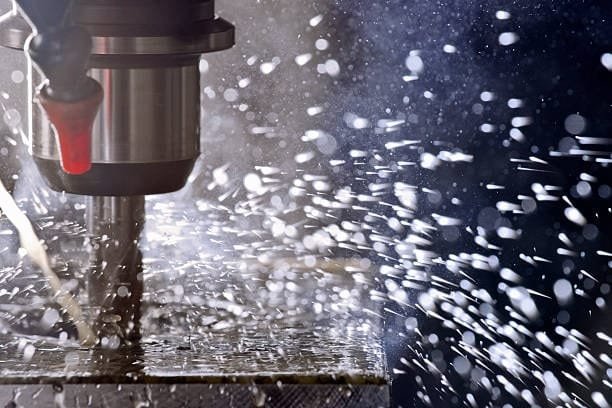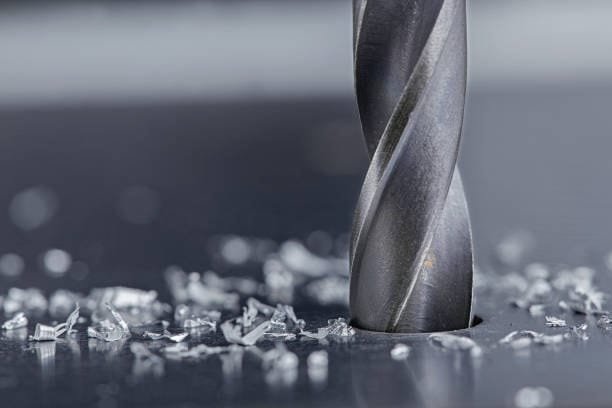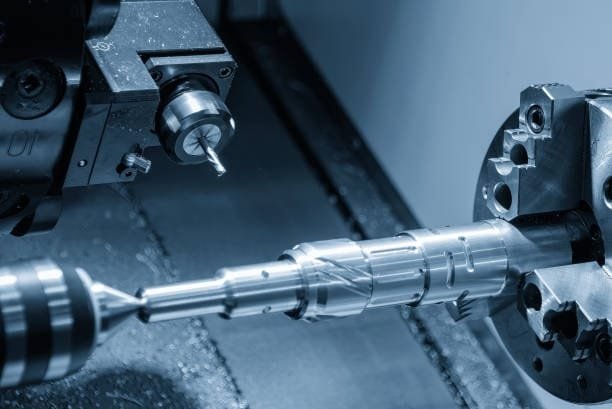Introduction
Introduction to Drilling Machining is one of the essential manufacturing processes widely used in contemporary industries for creating holes of specified sizes in different types of materials. Within the aerospace industry, where precision is of the utmost importance, to the automotive industry, where functionality and durability take precedence, precise drilling also helps fortify the structural integrity and operational ability of the broad number of applications involved. In this guide, we discuss the rules of drilling, covering the different types of drills used, operational techniques and best practices for achieving the best precision and efficiency Feeling their way through this deep dive, as it were, gain an appreciation of this essential process, including its complementarity and versatility across exciting, modern production.
Understanding Drilling Machining

The surface of the workpiece can prevent a hole; however, drilling machining cuts a round through the workpiece expansively. This process plays a central role in metalworking, woodworking and plastic fabrication industries. Drilling is frequently the first operation in a chain of machining processes that leads to other operations, such as boring, reaming, or tapping. The concept gun drilling is simple; execution is complex, and requires careful thought about tools, materials* and techniques to achieve consistent quantitative and qualitative results. Drilling machining of all varieties is critical to the manufacturing process, whether you are forming a small, functioning piece or a larger structure that requires exertion and rigidity.
Types of Drilling Machines

Similar to that, we have distinct stack machines to perform different functions around cutting edge of this stack. Through the understanding of the differences between these machines, manufacturers can make appropriate equipment selections.
Bench Drilling Machine
Bench drilling machine is a small and lightweight drilling machine, used for light work. This is a handy tool usually used in workshops or for small manufacturers and does not require heavy-duty work. Thanks to its small footprint, it is an excellent choice for hobbyists and also for pros that deal with smaller workpieces.
Pillar Drilling Machine
It is more largerand firm compare to the bench drilling machine. Best suited for medium- to heavy-duty drilling, this equipment gives the precision needed for such tasks. With its robust construction and reliable operation, it is the perfect tool for workshops that deal with a range of materials and a wide choice of hole diameters.
Radial Drilling Machine
The radial drilling machine has an adjustable arm for use with large and/or heavy workpieces. This flexibility makes it indispensable in sectors with oversized components or intricate drilling patterns. It not only improves productivity but also increases the precision level, as it allows you to manoeuvre the whole drill head without changing the workpiece.
CNC Drilling Machine
Computer Numerical Control (CNC) technology has opened doors for drilling machining. With unrivaled precision and automation, CNC drilling machines are essential for mass production and complex drill patterns. Trained on vast libraries of data and programmed to effortlessly execute multi-faceted behavior, bringing far less human error and a lot bigger throughput to industries that demand a high throughput,
Deep Hole Drilling Machine
The deep hole drilling machine is designed for applications in need of deep, precise holes, and high degree of accuracy. Commonly used in aviation and oil, this specialty equipment holds tight tolerances across greater depths. Its capacity to create quality deep holes guarantees its relevance in the production of crucial components, such as turbine shafts or drilling rigs.
Types of Drill Bits

The quality and accuracy of the hole made depends greatly on the type of drill bit used. Since applications vary widely in its workpiece, different designs and materials serve different applications to ensure effective machining.
Twist Drill Bit
The most popular, twist drill bit is a type defined by its helical flute design, which quickly clears chips out of the hole while drilling. With the ability to work on everything from metals to plastics, it can perform reliably in both manual and automated, multi-setup drilling configurations.
Step Drill Bit
The step drill bit is invaluable when drilling project more than one hole diameter is required without tool exchange. Its multi-level design means it can drill progressively, producing holes of different sizes in one pass. For example, that efficiency is especially useful in sheet metal work and other applications with gradual openings.
Center Drill Bit
Accuracy starts with good alignment, and the center drill bit is great in that role. This small and efficient guide hole then corrects the path for the hole depths the drill bit, so the larger drill bit doesn’t follow the drill bit path, resulting in a much more accurate hole and path for drilling operations. FAQs: This tool becomes critical in applications where exact positioning of drill diameter is wanted.
Spade Drill Bit
The spade drill bit is a practical fix for drilling larger diameter holes in both wood and softer materials. Its flat, paddle-like shape slices easily through less dense materials, which is why this design is used for carpentry and construction jobs where speed is more important than an ultra-smooth surface.
Carbide-Tipped Drill Bit
Stainless steel and cast iron are tough materials, and require an especially durable tool, which is where the carbide-tipped drill bit comes through. The carbide tip is mechanically hardened and resistant to heat and wear, providing consistent results in extreme conditions. Its resilience makes it ubiquitous in heavy industrial environments.
Drilling Operations and Techniques

Various methods are utilized to obtain the optimal results in the drilling and machining operations depending on the different implementations and objectives of complex drilling tasks. Understanding these methods helps increase the speed and quality of process.
Conventional Drilling
The building block of hole-making, traditional drilling uses either man-managed or machine-worked drills to penetrate holes in a workpiece. This simple method can be applied to a large number of applications, providing versatility for both small and industrial scale ideas.
Peck Drilling
When a hole needs to be drilled far from its source however, peck drilling is needed. This method consists of getting the drill in deep in small increments and then pulling it back periodically to remove chips and prevent it from overheating. In demanding processes, peck drilling optimizes cuts and extends tool life by controlling chip removal, heat and debris.
Reaming
Reaming is performed after initial drilling for holes that require a high level of accuracy and a smooth finish. This causes a larger hole to form very precisely and with very tight tolerances by removing small imperfections. Reaming is frequently a finishing operation for components going to critical assemblies.
Tapping
Thread-cutting is a specialized version of drilling: tapping readies holes to accept the threads of screws or bolts. Once you have drilled the first hole, a tap tool will cut internal threads so that you can fasten your bolts into it. A fundamental technique, which is essential to approach in mechanical assemblies where threaded connections are needed.
Boring
Where boring falls into place is when you need to enlarge or refine an existing hole. This machining process enhances dimensional accuracy and surface finish best suited for applications that exceed what standard drilling can achieve. Boring makes sure the finished hole is exactly according to specs.
Factors Affecting Drilling Efficiency

This is dependent on a few factors that can be adjusted to make the drilling site operation successful.
Material Type
The workpiece material determines the selected drill bit and cutting parameters. Materials of varying hardness — like soft wood and hard titanium — require different means of construction and cutting tooling to achieve desired results.
Drill Speed and Feed Rate
To avoid overheating the drill bit diameter itself, or of wearing it down too much rotating cutting tool quickly, we can balance the RPM of the drill motor against the feed rate as the drill bit bores into the material. Make sure that these settings are adjusted correctly as they are essential for clean cutting and in minimizing the wear of the equipment.
Coolant and Lubrication
The heat and friction involved in drilling can be serious and debilitating issues, but coolants and lubricants conventionally allay those problems. Through heat dissipation and diminished resistance, these materials improve the quality of the hole and shield the drill bit from premature wear.
Workpiece Stability
The workpiece being drilled shouldn’t be able to move securely due to a clamp, so that part and the piece remains your alignment. Good fixturing prevents vibration and movement, keeping the drill body the hole exactly where it is supposed to go.
Tool Wear and Maintenance
Drill bits wear out and they wear down on performance and accuracy. Routine inspecting and proactive replacement or sharpening create an efficient environment, protecting against defects and ensuring consistency.
Applications of Drilling Machining

Drilling machining is an integral part of various verticals, with every vertical depending upon it for several processes.
Automotive Industry
It wouldn’t be the first time that a hole in a transmission, for example, was misdrilled, causing the assembly or performance to fail. Drilling ensures that these elements mate together perfectly, which in turn aids in reliability and safety of the vehicle.
Aerospace Industry
In aerospace, where tolerances are very tight, drilling holes in aircraft parts for rivets, bolts and other fasteners multiple spindle drilling machine. The accuracy of this process is crucial to the structural integrity of planes and spacecraft.
Construction Industry
Drilling is used to install fasteners, reinforcements, etc. in concrete, wood and metal structures. From residential apartments to mega infrastructure, this process ensures durability in construction cnc milling.
Medical Equipment Manufacturing
For its proper functioning and biocompatibility, surgical tools, implants, and devices have to have meticulously drilled holes. These products meet stringent standards in the medical field which is powered through precision drilling.
Oil and Gas Industry
Oil and gas exploration pulls resources from the ground through extracting or drilling deep holes cnc drilling operations. The penetrating power to penetrate hard materials at long distances meets the operational needs of the industry cnc machining.
Best Practices for Effective Drilling

Implementing decorative strategies as proven practice in drilling machining increases service performance and efficiency.
- Choose the right drill bit based on the type of material you are machining.
- Using the right tool for the workpiece results in clean cuts and minimizes damage to both the bit and the material.
- Minimize waste with appropriate cutting speeds and feed rates.
- Fewer wears means less in body heat, and better performance.
- Use coolants and lubricants so the tools do not overheat and wear out quickly.
- The quality of the hole is improved because these aids maintain tool integrity.
- Correctly align and clamp the workpiece.
- Even during drilling, stability ensures stability.
- Inspect and replace damaged drill bits regularly.
- Good maintenance preserves quality and prevents costly mistakes.
- Use CNC drilling whenever you need high precision and more repetitions.
- In contrast, automation shines in complicated or high-volume production, bringing reusable precision.
Conclusion
Machined drilling remains an integral part of modern manufacturing, propelling advancements in multiple industries. Precision and efficiency in drilling impact the quality of the final products, regardless of how manually or with sophisticated CNC systems drilling is performed upright cnc drill press. By adopting best practices and capitalizing on technological developments, manufacturers can realize optimized performance, decrease defects, and enhance productivity. Drilling machining will grow with industry as a crucial process in producing reliable, high-performance components.

